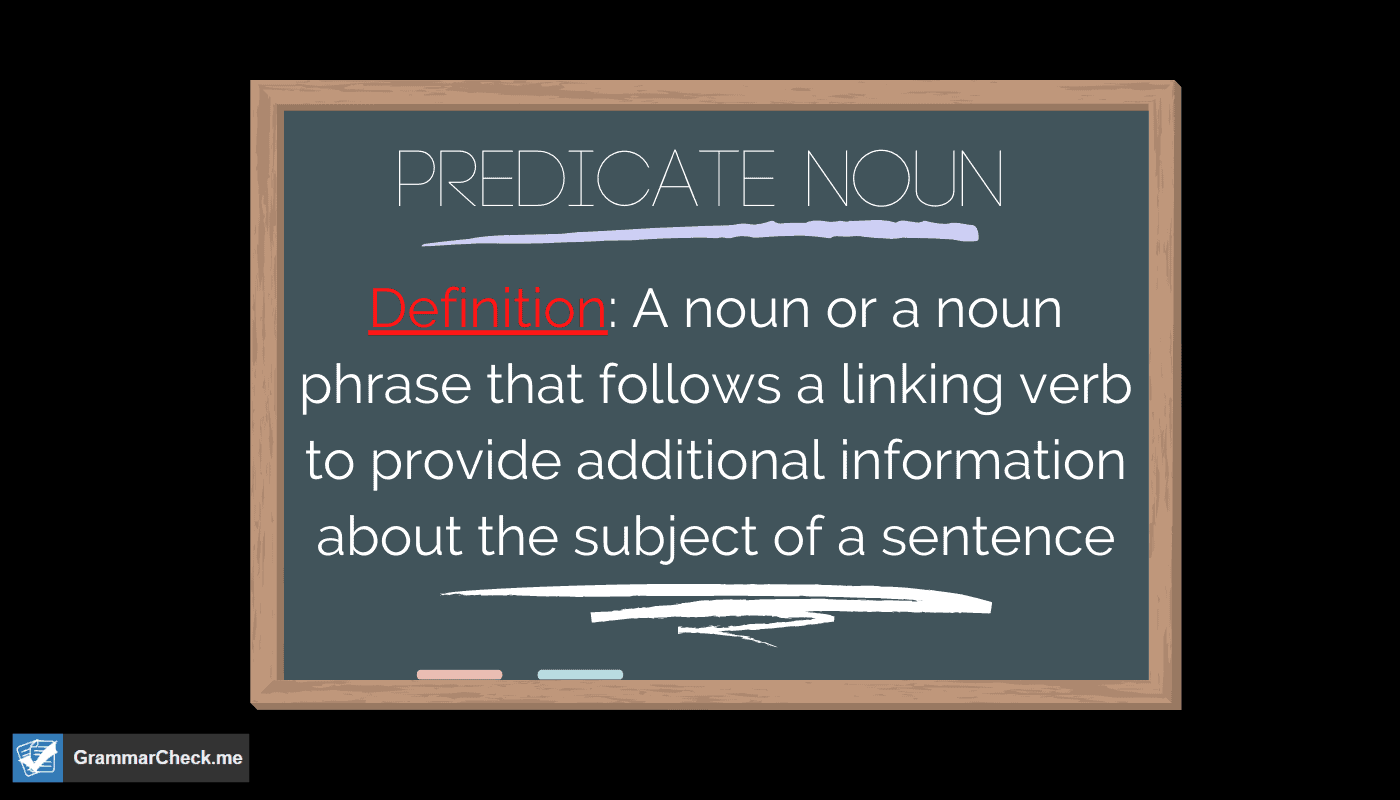What is a predicate noun, and how do you use it? Find the answers in this article.

A sentence in the English language has several different components. While the simplest sentences consist of only a single verb, other sentences may contain a subject and multiple verbs and nouns.
A predicate is a part of most sentences, and you may be surprised to learn that there are different types of predicates. One type of predicate you often encounter – whether you recognize it or not – is a predicate noun.
What is a predicate noun, and how do you use it? In this article, you’ll learn everything you need to know about predicate nouns. By the end, you’ll be able to recognize them and know when to use them.
What Is a Noun?
Before diving into what a predicate noun is, let’s break down what each part of this word means.
You’re probably familiar with the definition of a noun – a word used to identify people, a place, or a thing – but you may be surprised to learn how many different types of nouns there are in English.
Here are a few different types of nouns you can find in the English language:
- Common nouns: Nouns that refer to a generic or undefined group or class (ex., cat, country, book, etc.)
- Proper nouns: distinguish a specific person, place, or thing (ex., Nana in English, United States, George, Kleenex, etc.)
- Collective nouns: a word functioning as a singular noun while referring to a group (ex., flock, litter, group, etc.)
This is only the tip of the iceberg, but we’re going to focus on predicate nouns.
What Is a Predicate?
A predicate noun is a type of complement, an optional part of a sentence that completes its meaning. A complement often answers the question of “who” or “what” in a sentence after the presence of a verb.
There are generally three types of complements:
- Direct object
- Predicate adjective
- Predicate nominative (or predicate noun)
A direct object is a noun or pronoun, like him and I, that completes the sentence’s meaning and answers “who?” or “what?” after the verb. It receives the verb’s action and never refers to the subject. It can only occur when the verb indicates action.
Here’s an example of a direct object:
- Lindsay caught the puck: The puck is the “what.”
Similarly, a predicate adjective also completes the meaning of a sentence but only answers “what?” after the verb. It refers back to and describes the subject, but it does not receive the action of the verb. It only occurs if the verb indicates the state of being.
Here’s an example of a predicate adjective:
- Lindsay is lazy: Lazy is the “what.”
So that leaves us with the predicate noun.
What Is a Predicate Noun?
A predicate noun, also known as a predicate nominative, works the same as a direct object does. It is a noun or pronoun that completes the meaning of a sentence by answering “who?” or “what?” after the verb. Compared to a regular noun like chris’ vs chris’s!
The main difference is that while it refers back to and renames the subject, it does not receive the action of the verb – the inverse of how the direct object works. Action verbs performed by the subject on a direct object noun are never used with predicate nouns.
Likewise, in contrast to predicate adjectives that serve as descriptors, predicate nominatives serve as nouns.
Moreover, a predicate noun can only occur when the verb indicates a state of being. In general, predicate nouns follow linking verbs, so let’s take a second to discuss what a linking verb is.
What Is a Linking Verb?
A linking verb is a verb that links the subject of the sentence to a word in the predicate.
Here are a couple of examples of popular linking verbs:
- To be
- To become
Here are a few examples of these linking verbs conjugated and used in a sentence:
- Naomi is Rachel’s sister.
- The student became the teacher.
Everything after the linking verb is the predicate noun in these sentences – “Rachel’s sister” and “the teacher.”
Let’s check out examples of other predicate nouns in action.
Examples of Predicate Nouns
Here’s a simple example of a predicative noun:
- Lindsay is my wife.
In the sentence above, “is” is the linking verb, so you must look after it to find the predicate noun, “my wife.” “My wife” answers both the “who” and the “what” of the sentence and describes a state of being.
Here’s a longer sentence as an example:
- Kayla is very well-loved by her friends and family.
The first step is identifying the sentence’s subject, “Kayla.” From there, it’s easy to identify the linking verb, which you will typically find right after the subject. In this case, our linking verb is “is.”
Now, all that’s left to find is the predicate noun describing the state of being of the subject, which in the sentence is “very well loved by her friends and family.”
This example also reveals one more distinctive quality of predicate nouns: they are the remainder of the sentence after the subject and the linking verb.
Understanding this rule will make it easy to identify predicate nouns in any sentence you encounter in the future.
Final Thoughts
To recap, the main three ways to identify a predicate noun are:
- Check if it follows a linking verb.
- Verify that it’s providing additional information on the subject.
- Confirm that it describes a state of being.
Knowing how to spot a predicate noun will significantly help your writing and allow you to create more vivid and descriptive sentences.
